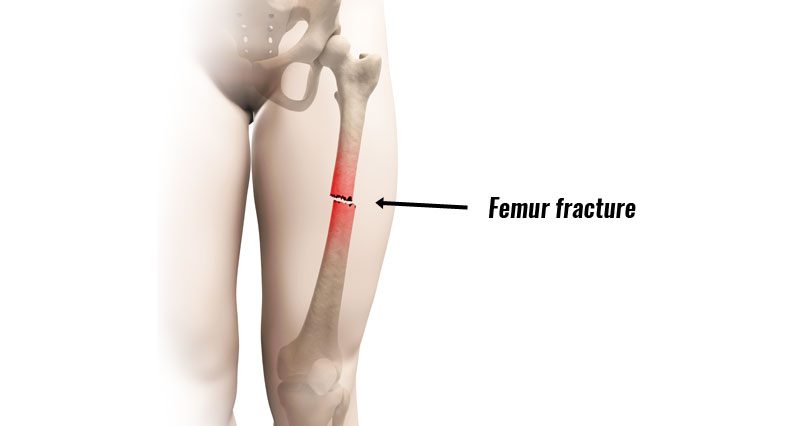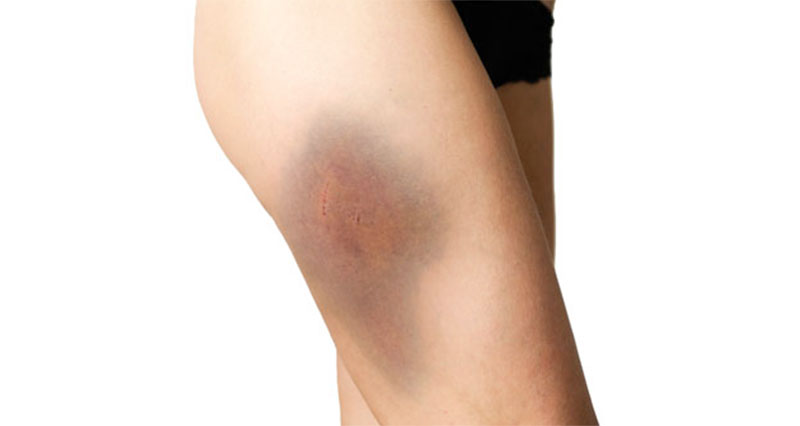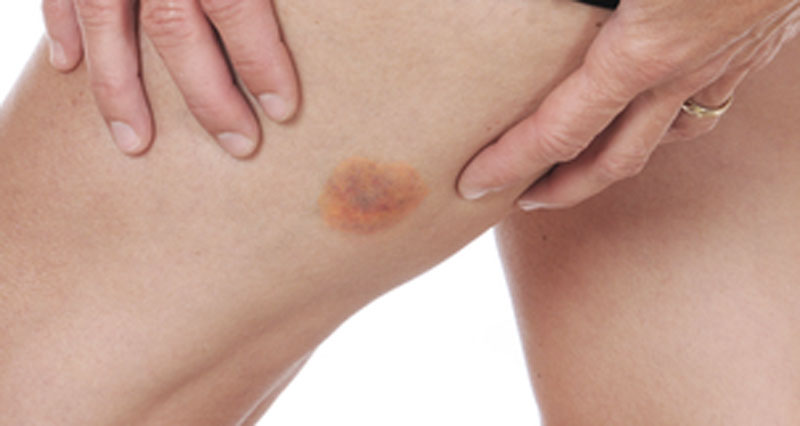A Femur fracture is a rare, but very serious injury caused by sudden, severe trauma. If you suspect a fracture seek emergency medical attention immediately.
Medically reviewed by Dr Chaminda Goonetilleke, 27th Jan. 2022
Signs & symptoms
Femur fractures are more common in road traffic accidents. Signs and symptoms are:
- Severe thigh pain.
- Deformity of your leg. For, example, it may be at an angle or appear shorter than the other.
- You will have a considerable amount of swelling.
It is important to look out for signs of injury to other structures, such as blood vessels and nerves. These include:
- Immediate bruising.
- A cold or pale lower leg or foot. This indicates possible restricted circulation.
- Tingling or numbness in the lower leg or foot. indicating nerve damage.
What causes a broken femur?
Traumatic femur fractures occur from one specific force. It takes a lot of force to break the femur as it is a very strong, thick bone. For this reason, broken femurs are most frequently seen in road traffic accidents and falls. They are rare in sports.
Who is at risk?
The elderly, especially those affected by Osteoporosis are more susceptible to femur fractures. If you break your femur then you are very likely to have other injuries or complications as well. An open fracture is one where the bone has punctured the skin. As a result, the risk of infection is higher.
Femur fracture treatment
The type of treatment needed depends on the extent and location of the fracture and your age.
For example, in young children immobilizing the leg in a cast may be sufficient.
However, in adults and adolescents, casting is not usually recommended unless the leg is also placed in traction.
Due to the length of stay in hospital stay, this form of treatment is rarely used. Surgical fixation is used most frequently.
Blood flow to the femur is poor. As a result, it takes a long time to heal. Therefore, depending on the location of the fracture your surgeon will use large nails (intramedullary nails) which are inserted through the bone. Or use plates and screws to bring the fractured bones together.
Once it has healed, the metalwork may or may not be removed.
Recovery time
Generally, a thigh bone fracture will take 3-6 months to heal completely.
A thorough rehabilitation program should be undertaken to regain full movement, strength, and balance.



